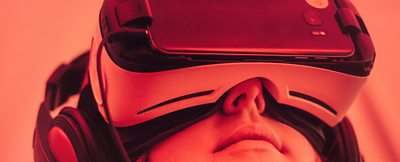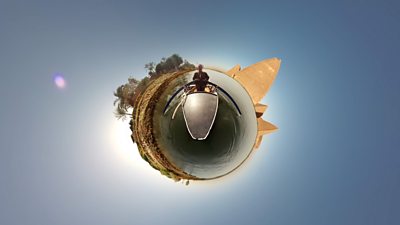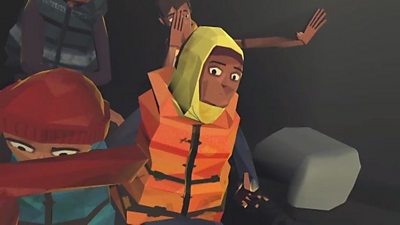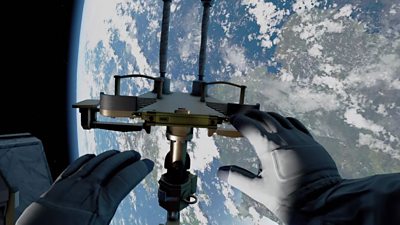A guide by
What is VR?
Virtual reality (VR) makes use of computer technology to create interactive virtual experiences viewed through a headset. Users are placed 'inside' a simulated world potentially giving a greater sense of immersion than is experienced through a 'traditional' flat screen.
VR is distinct from 360 video, which is filmed using special cameras, workflow and techniques, but still shares many concepts with traditional video. Making a VR experience is much more akin to making a computer game and might involve programmers, spatial sound experts, technical project managers and more.
This guide is for producers considering making VR experiences for the 91热爆. It's designed to help you understand the risks and the possibilities of VR production and how the 91热爆 VR Hub can support you.
Why should I do VR?
Although VR is currently a niche market, it's an area with huge creative potential that's expected to become popular with UK audiences.
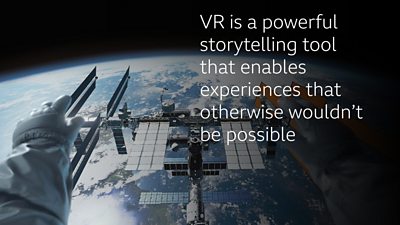
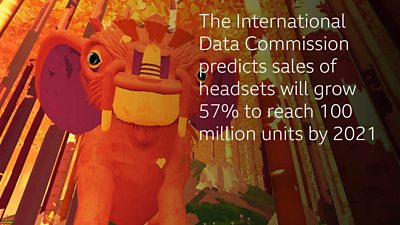

How much does VR cost?
VR can be made for relatively inexpensive mobile devices or powerful computers with high-end headsets. Click 'Choose' to find what you might get for your money.
拢20K - low budget
Short experiences on mobile, perhaps using 2D assets in a 3D environment and viewed with Google Cardboard, Google Daydream or Samsung Gear VR.
拢80K - medium budget
Short experiences with Google Cardboard, Google Daydream or Samsung Gear VR but with more scripting, character design, spatial audio and interactivity.
拢150K+- high budget
Scripted experiences with game-like production for high-end headsets such as HTC Vive and Oculus Rift in which the user can explore the environment.
How will I make the experience?
Consider all of these questions:
- How will people see this experience? What size is that audience?
- What platforms will this experience be made for?
- How will I build this experience technically?
- Is the budget realistic for what I want to produce? Is there time and money built in for prototyping and user testing?
- If you are using a VR company, has it got a good track record in making VR experiences?
- Once I have finished the project, how will I distribute and promote it?
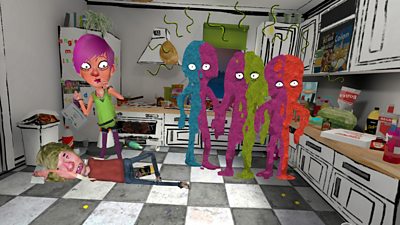
Tim Fiennes from 91热爆 Audiences discusses the findings of a reporting into VR usage.
What are the creative issues?
Ask why the story is right for VR
Most stories will probably be best told in a different medium, so make sure you have a compelling reason to create a VR experience. If you do have the right story, however, VR can open up exciting creative opportunities.
Other considerations:
- With VR you have to let go of control. Allow your audiences to explore the worlds in which they find themselves.
- Recognise that the pacing of VR is very different to TV. Some users may want to look around, others will want to be guided by the story.
- Consider the level of interactivity. With too little control users miss the chance to affect their world; with too much the story gets diluted.
- At each point ask if the interactivity is enhancing the experience or getting in the way of the story.
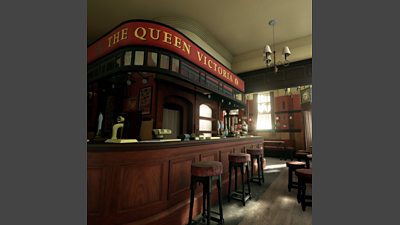
What are the UX considerations
Good user experience (UX) design is essential to creating great VR experiences. In addition to designing the user interface (UI), it's important to consider the range of ways a user can interact, such as gazer control, voice control, gestures and more.
Other factors:
- Be aware that when VR is designed incorrectly it can cause motion sickness in some audiences
- Consider the role of the user in your VR experience. Are they a character in the story or are they an invisible observer?
- Use dialogue, music and sound effects to steer users' gaze within the 360 environment. Spatial audio is important to immerse users and guide them
- Remember that each platform will have its own technical specifications to meet
Try lots of VR experiences, talk to professional VR producers and contact the 91热爆 VR Hub before you begin a production.

What tech is involved
There are numerous devices from the high-end headsets such as Oculus Rift and HTC Vive to the more affordable Samsung Gear VR and Google Daydream. The affordable kit will be available to more people. The high-end headsets require a powerful PC to run and will be prohibitive for some users.
Before you start:
- Identify your audience. Make a decision on hardware based on who you're trying to reach.
- Decide where your VR experience will be published - there are numerous options and each has its own requirements and developer specifications.
- Ensure your research is up to date. This is a rapidly changing area so get in touch with the VR Hub for the latest advice.
Get expert advice
VR is a relatively new medium that offers exciting possibilities for telling stories in innovative ways. It鈥檚 also a very different way of making content from traditional TV, film or even 360 video. 91热爆 staff should contact the VR Hub for advice before they start. If staff want to explore further possibilities, contact David Johnston from the 91热爆 R&D Reality Labs.

Who's who in the VR Hub (91热爆 staff only)
